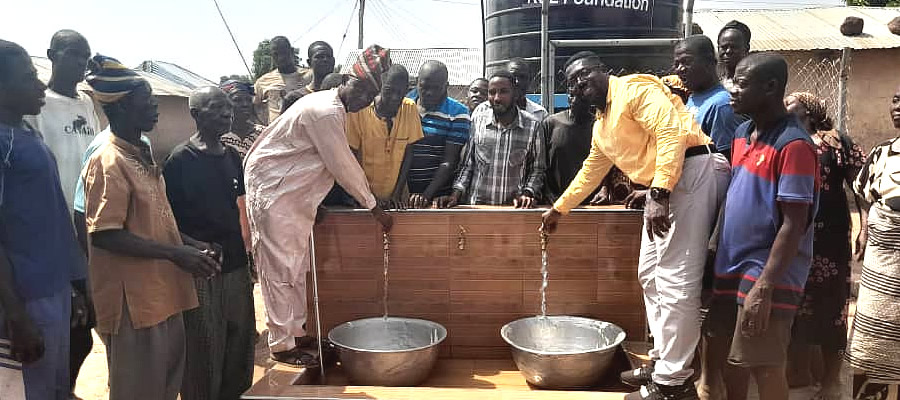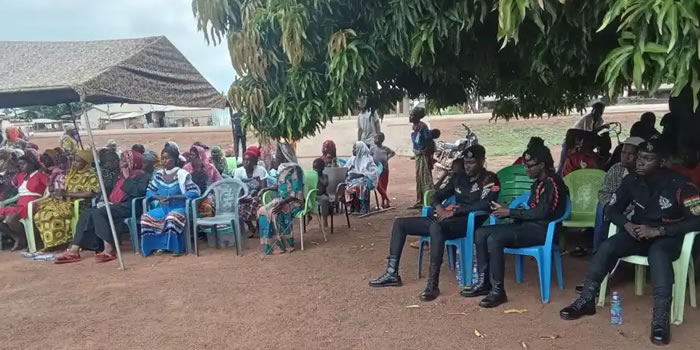

North East Gonja District is one of the Seven (7) MMDAs in the Savannah Region. The District was carved out of East Gonja Municipality in 2018 with a legislative Instrument (LI) 2367. Inaugurated on 12th February, 2019.
Location and Size
The district shares boundaries with the Mion District and Tamale Metropolitan Assembly to the North, Central Gonja District to the West, Nanumba-North to the East and East Gonja Municipal to the South. It lies within Latitude 8oN & 9.29oN and, Longitude 0.29E & 1.26oW. It lies within Latitude 8oN & 9.29oN and, Longitude 0.29E & 1.26oW. The total land area of the district is estimated to be 3,500 square kilometres; constituting approximately 10% and 1.5% of the total land area of the Savannah and the country respectively. The district has a total of 86 communities.
Climate
The District lies in the Tropical Continental climatic zone. Temperatures are fairly high ranging between 29oC and 40oC. Maximum temperature is usually recorded in April, towards the end of the dry season with minimum temperatures recorded from December to January, during the Harmattan period. The area experience a single rainy season (May to October) and a long dry season (November to March/April). Average annual rainfall varies between 556.35 mm and 867.60mm. The climate is very suitable for tubers and cereals production.
Vegetation
The natural vegetation in the district is the Guinea Savannah Woodland. There are few grooves, which have been preserved over the years. The tree cover is relatively dense, compared to the rest of the Savannah Region. However, intensive harvesting of the trees for fuel wood and charcoal burning, and also activities of the Fulani herdsmen is fast reducing the tree cover, particularly in areas close to the Tamale Metropolitan District.
Drainage
The district has a number of large water bodies that flow throughout the communities. These include the Volta Lake and the Dakar River both of which run across the district. A number of streams, dugouts, valleys, hills and mountain are also found at various locations in the district, as part of the natural environment.
Soils
The soils in the district can be classified into two. These include the Alluvial soils generally classified under Glysols and are found around the Volta Lake, particularly in the drawn-down zone of the Volta Lake during the dry season. The soils along the Lake are medium textured and moderately well drained in parts. The soil are potentially fertile and has potential for a variety of crops especially vegetables, rice etc.
The bulk of the district is covered by ground water laterites, developed mainly from Voltaian Sandstone materials, which is highly concretional in nature with frequent exposures of iron pan and boulders.
Environment
The natural vegetation is the Guinea savanna which has developed from climatic conditions and changed substantially by human activities (farming and Fulani activities). The common trees in the community are shea trees, dawadawa trees, mangoes and neem trees. Indiscriminate cutting down of trees for firewood and Charcoal is a common practise in the district. Others are bush burning, overgrazing by farm animals and occasional flooding that occurs especially during the raining season. However, considerable efforts are underway to encourage afforestation work/tree planting in order to mitigate against environmental degradation and climate change effects.
Date Created : 6/4/2024 12:00:00 AM









 facebook
facebook
 twitter
twitter
 Youtube
Youtube
 +233 593 831 280
+233 593 831 280 0800 430 430
0800 430 430 GPS: GE-231-4383
GPS: GE-231-4383 info@ghanadistricts.com
info@ghanadistricts.com Box GP1044, Accra, Ghana
Box GP1044, Accra, Ghana